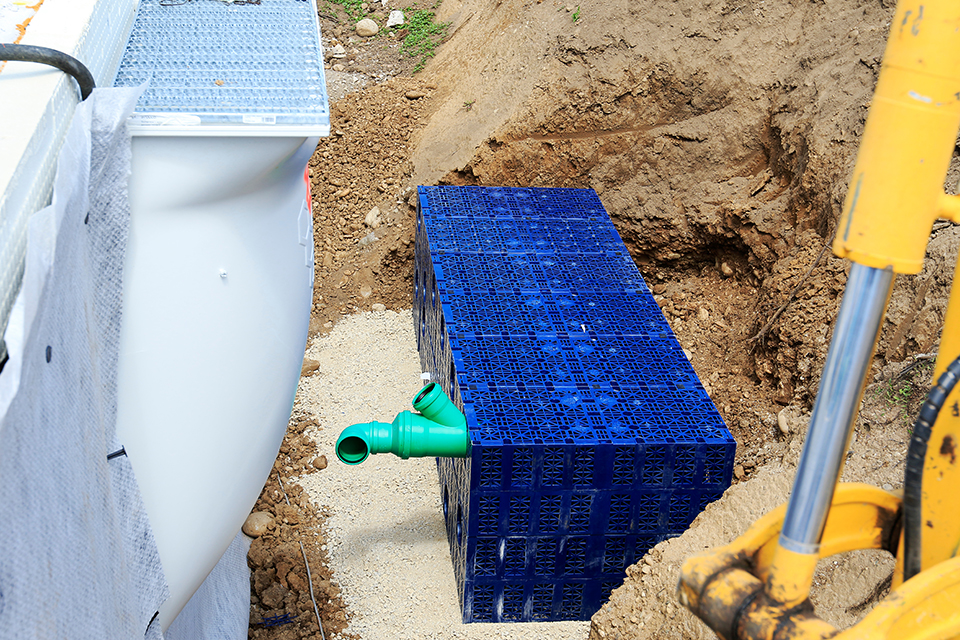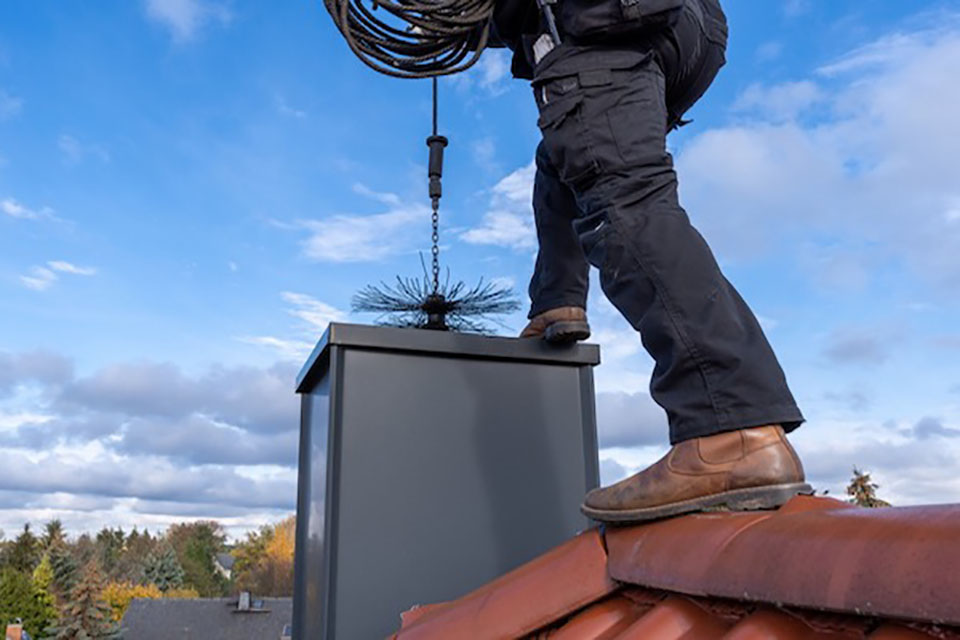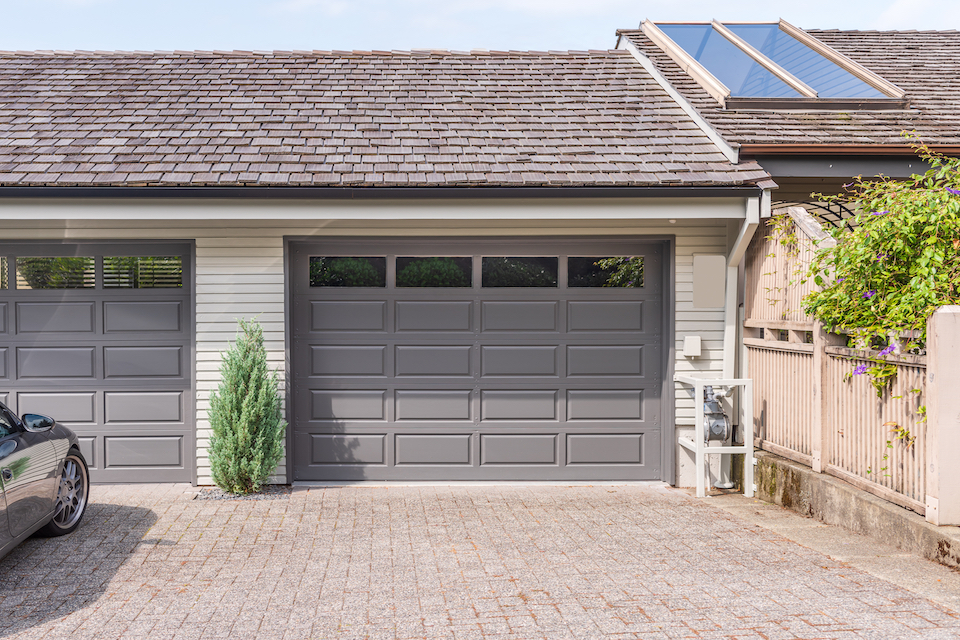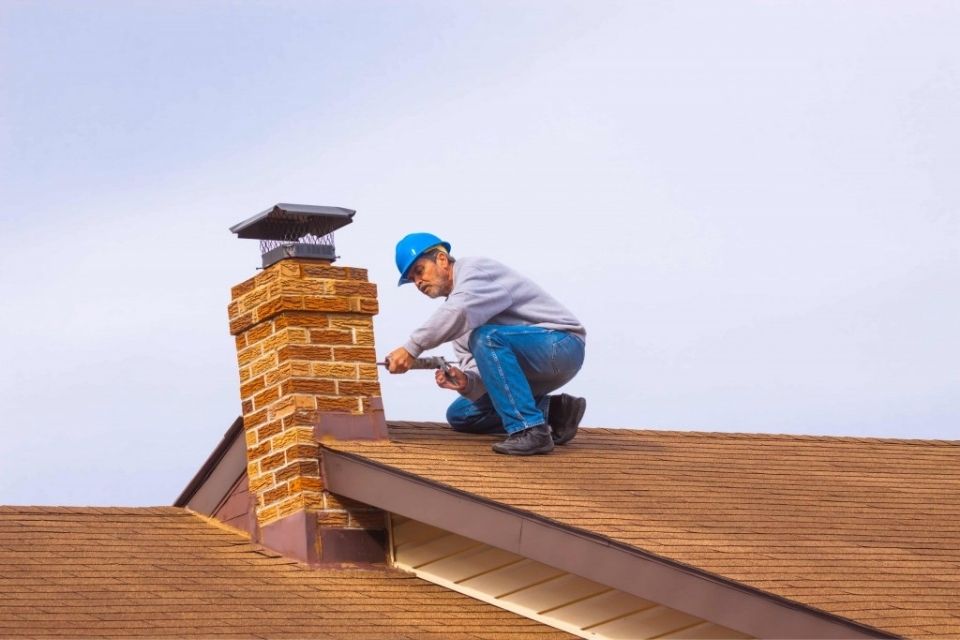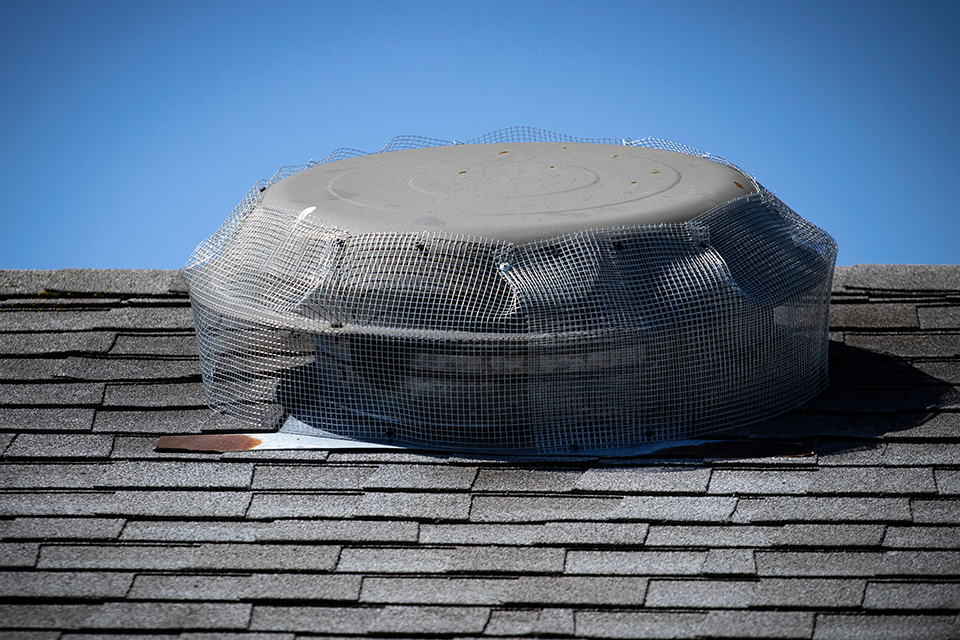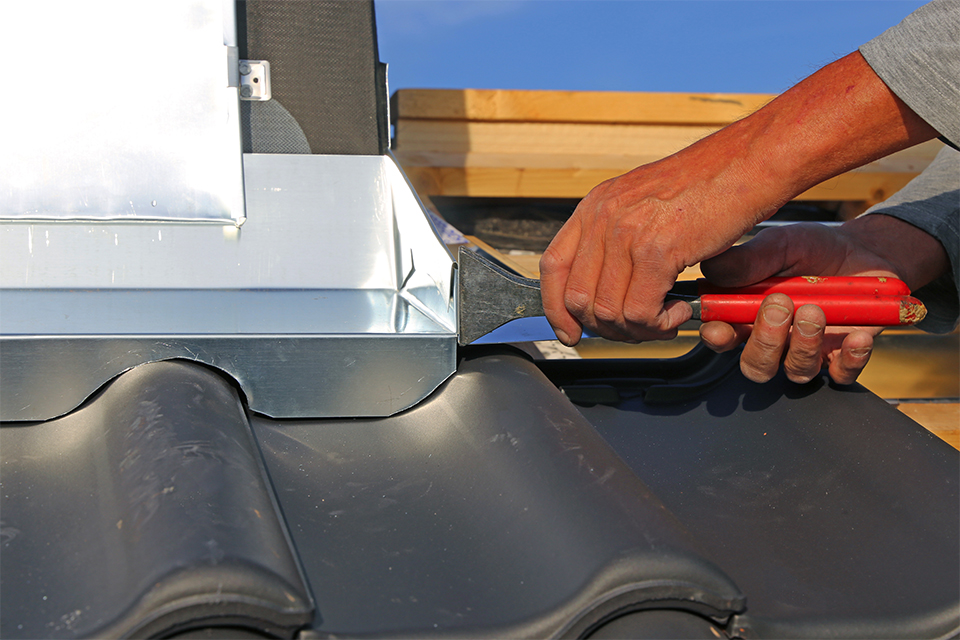How Much Does a Soakaway Cost to Install?
Soakaways are a well-known process of coping with rainfall. Essentially, a soakaway is a hole into the ground into which rainwater is drained.
A soak away is a method of slowly disposing of excess water by directing it away from the building or hard standing and allowing it to seep into the ground. This prevents flooding while also preventing damage to the property and its foundation.
There are several reasons why you might need a new soakaway, including rainwater from the roof guttering or a drainage channel. To begin with, soakaways frequently become blocked or even collapse due to the weight above them.
Alternatively, if you have expanded your home, the additional rainwater would be too much for your existing soakaway to handle.
Current building codes require that adequate surface rainwater drainage within the property boundaries be provided when constructing a new driveway, patio or paved front garden. A soakaway is an ideal solution to these regulations.
The benefits of a soakaway are:
- Reducing the strain on overburdened main drainage systems
- Your sewerage company may be able to provide a bill refund for surface drainage costs.
- Installing it is inexpensive, and it can be refitted relatively easily.
- However, it's important to note that, while soakaways are low-maintenance and dependable because the drainage is natural, it could lead to problems if they go bad for any reason.
The following are some potential drawbacks:
- When a soakaway is not equipped with a silt filter, it can become clogged with dirt and leaves.
- If the soakaway isn't far enough away from the house or isn't draining properly, it could cause problems with the foundation.
- Soakaways are not appropriate for poorly draining soil.
Here we will go through the costs to install a soakaway so you can see how much you will need to budget to have one installed in your home.
The average cost to install or replace a soakaway is around £700 - £1,000, with the price depending on a variety of factors, such as whether your soakaway will be placed under your lawn or driveway.
Other factors include the type of soakaway you choose, such as the old-fashioned way or with modern plastic crates, as well as your location.
A 190-litre soakaway will cost between £500 and £650, while a 333-litre soakaway will cost between £600 and £750.
An 800-litre Soakaway will cost between £1,000 and £1,100, while a 950-litre Soakaway will cost between £1,100 and £1,200.
In terms of other jobs, installing a new soakaway drain beneath a lawn would cost between £580 and £840. Expect to pay between £830 and £1,140 to install a soakaway drain underneath a driveway.
A garden soakaway drain replacement would cost between £500 and £710, while a soakaway drain below a driveway would cost between £630 and £940.
A soakaway is installed beneath a lawn or flowerbed, and pipework and backfilling are used. There are no tree roots, concrete, tarmac, or anything other than soil to dig up.
It can cost between £850 and £1,000 in the London area. The South, Southwest, and Midlands will cost between £800 and £900, while the rest of the country and the north will cost between £600 and £800.
Soakaway Installation Prices
The table below will show the costs to install a soakaway:
| Job | Cost |
|---|---|
| Install or replace a soakaway | £700 - £1,000 |
| 190-litre soakaway | £500 - £650 |
| 333-litre soakaway | £600 - £750 |
| 800-litre soakaway | £1,000 - £1,100 |
| 950-litre soakaway | £1,100 - £1,200 |
| New soakaway drains beneath a lawn | £580 - £840 |
| Soakaway drain underneath a driveway | £830 - £1,140 |
| Garden soakaways drain replacement | £500 - £710 |
| Soakaway drain below a driveway | £630 - £940 |
| London area | £850 - £1,000 |
| South, Southwest, and Midlands | £800 - £900 |
| Rest of the country and the north | £600 - £800 |
- How Much Does a Soakaway Cost to Install?
- What Are the Supply Costs to Install a Soakaway?
- What Additional Soakaway Installation Costs Are There?
- What Factors Impact Soakaway Installation Costs?
- Labour Cost to Install a New Soakaway Drain
- How Long Does It Take to Install a Soakaway?
- Types of Soakaways
- How Much Does Soakaway Removal Cost?
- FAQs
What Are the Supply Costs to Install a Soakaway?
A soakaway should be at least 5 metres from any building's wall and at least 2.5 metres from the boundary.
At any time of year, the water table must not reach the bottom of the pit, and it should not be close to some other soakaway or in a location where water could become contaminated.
The dimension of the soakaway should be determined by a drainage calculation, which is relatively simple once a drainage percolation test has been completed and the surface area from which the water is coming is known.
Before you begin, you must first make sure that the ground beneath you is porous, which will necessitate a percolation test. If a soakaway is to be successful, it must actually allow water to soak away.
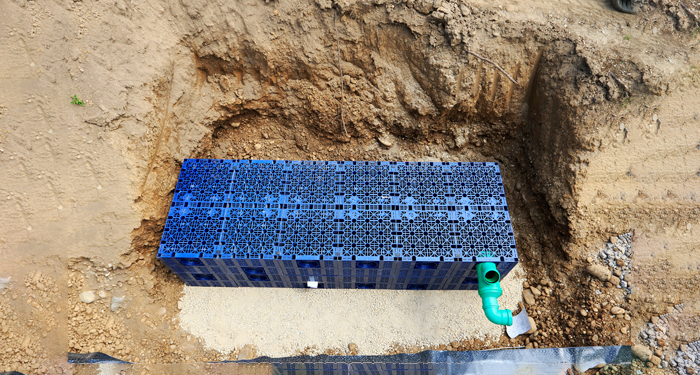
The traditional method for building a soakaway has been to dig a hole and fill it with cracked brick and builder's rubble. This is a low-cost option, but it limits the amount of rainwater that can be collected.
The modern option is to use soakaway or attenuation crates, which are dedicated plastic boxes. These are much more effective because they leave almost the entire space open to be filled with rainwater.
In addition, the crates can be built two or three deep as well as clipped together for added strength.
Of course, the soakaway should be located at the lowest level in the rainwater drainage system. The size of the crates you'll be using determines the width and depth of the hole.
The hole is then lined with geotextile sheeting, which allows water to drain while preventing soil from filling the void. After that, the crates are placed inside the dug-up hole, and the geotextile is covered around the entire structure.
If you decide to install a soakaway DIY, then we will go through the materials you will need to complete the job.
In terms of materials, a 190-litre soakaway drain will cost between £100 and £200, a 333-litre soakaway drain will cost between £150 and £250, an 800-litre soakaway drain will cost between £150 and £310, and a 950-litre soakaway drain will cost between £180 and £340.
The supplies, as with installing a soakaway beneath the lawn, would cost between £100 and £200. The supply cost for installing a soakaway underneath a driveway would be around £150 to £250.
The table below will break down what you will need to install a soakaway and its costs:
| Supply | Cost |
|---|---|
| 190-litre soakaway drain | £100 - £200 |
| 333-litre soakaway drain | £150 - £250 |
| 800-litre soakaway drain | £150 - £310 |
| 950-litre soakaway drain | £180 - £340 |
| Installing a soakaway beneath the lawn | £100 - £200 |
| Installing a soakaway underneath a driveway | £150 - £200 |
What Additional Soakaway Installation Costs Are There?
The cost of installing or replacing a soakaway drainage system is determined by the size/type of soakaway drain, as well as the specifics of the job (i.e., where this is being installed and whether it is a new installation or a substitute job), easy accessibility, and location of the property.
In this section, we will go over the various costs that may increase your overall costs and other jobs that may need to be included to complete.
Garden Renovation
Installing a domestic soakaway may require a major garden renovation, or you may simply decide to combine the two projects.
The costs of garden renovation will depend on the size of your garden and the complexity of the work you want to do.
While a garden renovation involves changing spaces that are already there, you could choose to employ a garden landscaper and designer to make more dramatic alterations.
Garden Waste Removal
If you have extensive work done on your garden (including the installation of a soak away), you may need to have garden waste removed.
While some contractors will include the price of waste disposal in their quotes, it's always best to check whether you need to make your own arrangements.
The price of having garden waste removed ranges between £70 and £200. The cost will be determined primarily by the length of your garden and the quantity of waste that needs to be removed.
New Driveway
The installation of a driveway soakaway could lead you to replace your driveway at the same time.
While the cost of driveway installation can range from £40 to £136 per m², this varies depending on the materials used. For example, tarmac driveway costs are typically between £70 and £120 per m².
Patio Costs
A new patio is another addition that homeowners frequently choose to install at the same time as a new soak away system.
Once again, the overall cost of laying a patio will depend on the material used, with prices ranging from £20 to £200 per m².
What Factors Impact Soakaway Installation Costs?
Here are a few cost factors that you may need to consider when installing soakaways:
Number of Tradespeople
The number of tradespeople can affect the overall cost. If the job is large, you may need to hire more than one tradesperson to complete it. The greater the number of tradespeople on the job, the more you can expect to pay for the work.
Length of Time
As with any job, some things will go wrong, resulting in more time spent on the job. The longer it takes to finish the job, the more you should expect to pay in total. Extra time is typically charged by the hour.
Size
The larger the soakaway, the more materials needed and the longer the installation time. All of this raises the price.
The Material on The Surface
Digging a 2-metre-deep hole in the lawn with a mini-digger is simple and quick. The same hole (and trench) through concrete slabs, under steps, and so on is completely different.
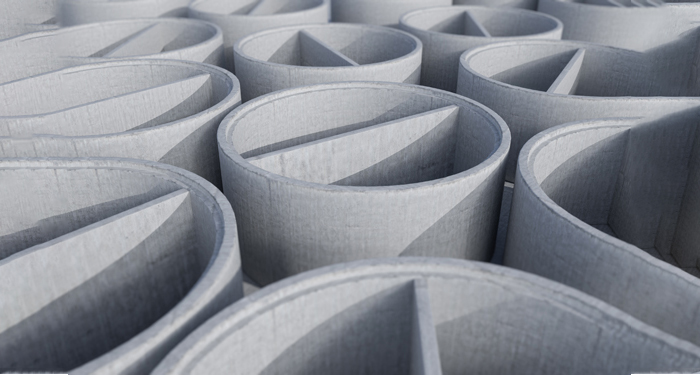
Labour Cost to Install a New Soakaway Drain
Once you've requested multiple quotes and chosen a company, a consultant will then come out and conduct the necessary tests/surveys to determine what type of drainage system is appropriate and where it should be installed.
The total cost of a soakaway drain installation includes the labour cost, supply, and waste removal costs. The labour cost for a 190-litre soakaway drain would be around £300 to £450.
A 333-litre soakaway drain would likely cost £350 to £500, an 800-litre soakaway drain would cost £700 to £900, and a 950-litre soakaway drain would cost £750 to £950.
Fitting a soakaway drain underneath the lawn would cost around £450 to £600, while installing a new soakaway drain beneath a driveway would cost around £650 to £850.
Replacing a current soakaway drain beneath a lawn would cost around £400 to £500, and replacing such a system beneath a driveway would cost around £500 to £700.
Soakaway specialists typically charge between £150 and £200 per day.
For smaller jobs like installing a new toilet or repairing pipes, plumbers typically charge around £40 per hour.
For those working for a well-established company, the standard hourly rate for a safe gas engineer can be up to £60 per hour, whereas self-employed plumbers can charge as little as £30 per hour.
The large percentage of labourers will charge by the hour rate of £8, which could include digging as well as assisting bricklayers.
If you employ a labourer through a corporation, you might be charged anywhere between £7 and £15 per hour, depending on the labourer’s skill level and the nature of the job.
During the summer, gardeners perform routine maintenance weekly, which includes watering plants, weeding, and lawn mowing. They start charging an average of £30 per hour for these services.
Smaller gardens may have an hourly rate of £15 per hour, whereas large, disorderly gardens may have an hourly rate of £50.
This is not a simple do-it-yourself project. If you intend to install drains and new plumbing/water lines, make sure you hire the best plumbers and contractors to do the job so that it is done correctly and the home follows local regulations once the drain system is installed.
How Long Does It Take to Install a Soakaway?
Soakaway crates work best in areas where the ground is impermeable, such as tarmac, paving blocks, and concrete. As a result, they are a legal obligation for building projects.
To maximise efficiency, crates should be placed in loamy or sandy soil. It is not recommended that you install them in clay soil because clay does not allow water to drain through it.
Before installing soakaway containers, you must conduct a 'percolation test' to determine whether the soil is suitable and to rule out any potential problems.
This usually entails digging three test pits, ideally to the depth at which the soakaway will be installed and where it will be placed and is completed in two days.
It would take two people just over a half-day to dig up the existing soakaway and lay a new one, presuming the soakaway was under a lawn or flowerbed rather than a patio or driveway.
If it is located beneath a hard surface, it will take significantly longer because huge segments of the driveway/patio will need to be dug up and fixed again.
To avoid structural damage, the ideal location is in the ground – at a lower level than for the building – at least 5 metres away from the house itself.
It is also necessary to determine whether new water lines and drains have been installed. In some cases, simply replacing a few pipes will suffice; however, with older driveways, you may need to remove and replace wiring and plumbing, which will take even longer to complete.
Choose whether to upgrade the pavers, work on the driveway, or simply install the drain system. If you decide to update the driveway, you should complete all projects at once to reduce labour costs and project completion time.
Finally, you want your new driveway to look nice and to drain properly. Again, you will find the best company and have the work done properly if you take the time to compare a few businesses and the services they provide.
Types of Soakaways
A soakaway is a broad term that refers to anything that transports wastewater from a septic system or sewage system.
These two types of tanks do not operate independently, and they require an outlet for the separated sewage to pass through in order for the wastewater to safely pass into the surrounding ground.
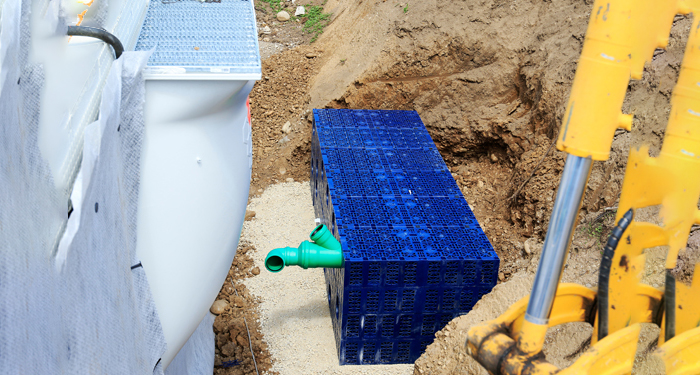
It is worth noting that a sewage treatment plant produces cleaner wastewater than a septic tank because it treats waste inside the tank before it exits through the outlet.
As a result, a sewage treatment plant is permitted to discharge directly to a watercourse or ditch, while a septic tank is not.
Here we will go through the different types of soakaways and their pros and cons, so you know what to expect when installing a soakaway into your home.
Drainage Field
A drainage field is a system of perforated or slotted pipework that connects to a septic tank and sewage treatment plant. It provides wastewater treatment by allowing it to percolate securely through the soft soils without causing pollution.
A percolation test determines the size and structure of a drainage field, and there must be enough space available on the property for it to be installed.
Furthermore, not all ground conditions are suitable for a drainage field - if the soil conditions at the estate are too wet or too dry, the drainage field will not function properly.
A percolation test will determine the type of ground conditions and whether a drainage field is necessary.
Pros
- Eco-friendly
- Treats wastewater
Cons
- It does not suit all ground conditions
- Not good for small spaces
Bore Hole Soakaway
A borehole soakaway is usually a 6-inch diameter vertical vented pipe that is used when a percolation test reveals that the soil conditions at the property are not suitable for a drainage field (or where there is insufficient space).
It is essentially a method of gaining access to more suitable ground conditions at a profound level. To determine whether a borehole soakaway would be suitable for the property, a trial borehole would be required, originally to a depth of 10 metres.
Pros
- It suits grounds that do not suit the drainage field
- Ideal for insufficient space
Cons
- Not always suitable
Chamber of Soakaway
A soakaway chamber is typically used when there isn't enough space for a drainage field, but the ground conditions are suitable.
A trial extraction is required to determine whether the ground is suitable for a soakaway chamber at the required depth.
Pros
- Good for homes with not a lot of drainage field space
- Trail excavation is needed
Cons
- Not always suitable
Pit Filled with Rubble
This is typically a rubble-filled excavation into which a solid pipe from the septic system discharges. It is an old type of soakaway that may still exist, but it is no longer considered a good solution for a septic system discharge.
Pros
- Long-lasting
Cons
- Not popular these days
- Seen as unsuitable
Personalised Soakaway Arrangement
A bespoke soakaway arrangement, such as a single line deep trench arrangement, may be permitted if all other options have been exhausted and with the express consent of the local Building Control department.
Pros
- Long-lasting
Cons
- Needs consent
How Much Does Soakaway Removal Cost?
It will cost you £150 to £300 to remove a current soakaway, plus additional labour costs if an existing tank must be removed and disposed of first.
Although it is possible to save money by hiring a digger yourself, it's best to hire a professional to do the installation to avoid complications.
The removal of a current soakaway and replacement with a crate-based system generally requires:
- Digging up the existing drainage pipe and laying gravel in the trench's base.
- Excavating the old soakaway to a depth of 1.2 metres and testing the soil for permeability.
- Filling the hole with gravel, soakaway crates and new drainage pipes.
- Laying the membrane over and around the crates, followed by the topsoil.
- Connecting the soakaway drainage pipe to the rainwater downpipe.
Soakaway and Septic Tank Issues
If you have an obstructed soakaway because of a faulty septic tank, you may be able to have it repaired through your current warranty or through your building's insurance provider.
Full replacement of your septic tank may be the only option if critical parts have lost structural integrity or are decaying.
Older septic tanks are more likely to have cracks or crumbles in their pipework, allowing wastewater to enter areas where it can cause a problem. Insurance and warranties may not cover older septic tanks.
FAQs
Q: How do soakaway drains work?
A: Soakaway crates function as a more advanced version of a traditional ditch or pit. Traditionally, these were filled with gravel and used to soak stormwater as well as excess surface water.
The main issue is that the pit inevitably collects soil and debris, filling the empty space in the ditch and preventing water from flowing into it, rendering the pit useless over time.
Soakaway systems do not have this issue. The exocellular crates are designed to act as a storage tank for stormwater collected from persistent rain. The crates, which are made of plastic and clip together quickly to form a box structure, are widely used in a variety of projects ranging from commercial to domestic.
Q: How deep should you dig a soakaway?
A: The depth varies depending on the location; if it's under a garden or patio, for example, it only needs to be 1310mm deep; if it's under your driveway, it should be 1510mm deep to allow for more top fill.
Q: Do you need planning permission for a soakaway?
A: In most cases, you will not need planning permission to install a replacement soakaway. However, you must notify your local planning office if you are constructing a new foul Soakaway or drainage field.
Q: How long do soakaways last?
A: They should last the life of the house, or at least 100 years, if properly installed and filters are being used to prevent leaves and other debris from clogging the soakaway.
Q: How do you clear a blocked soakaway?
A: Placing high-pressure water jets into the plastic crate on its own is the most common way to clear out a soakaway blockage.
The water pressure forces accumulated silt out of the crate's small channels, allowing the soakaway to function normally.

